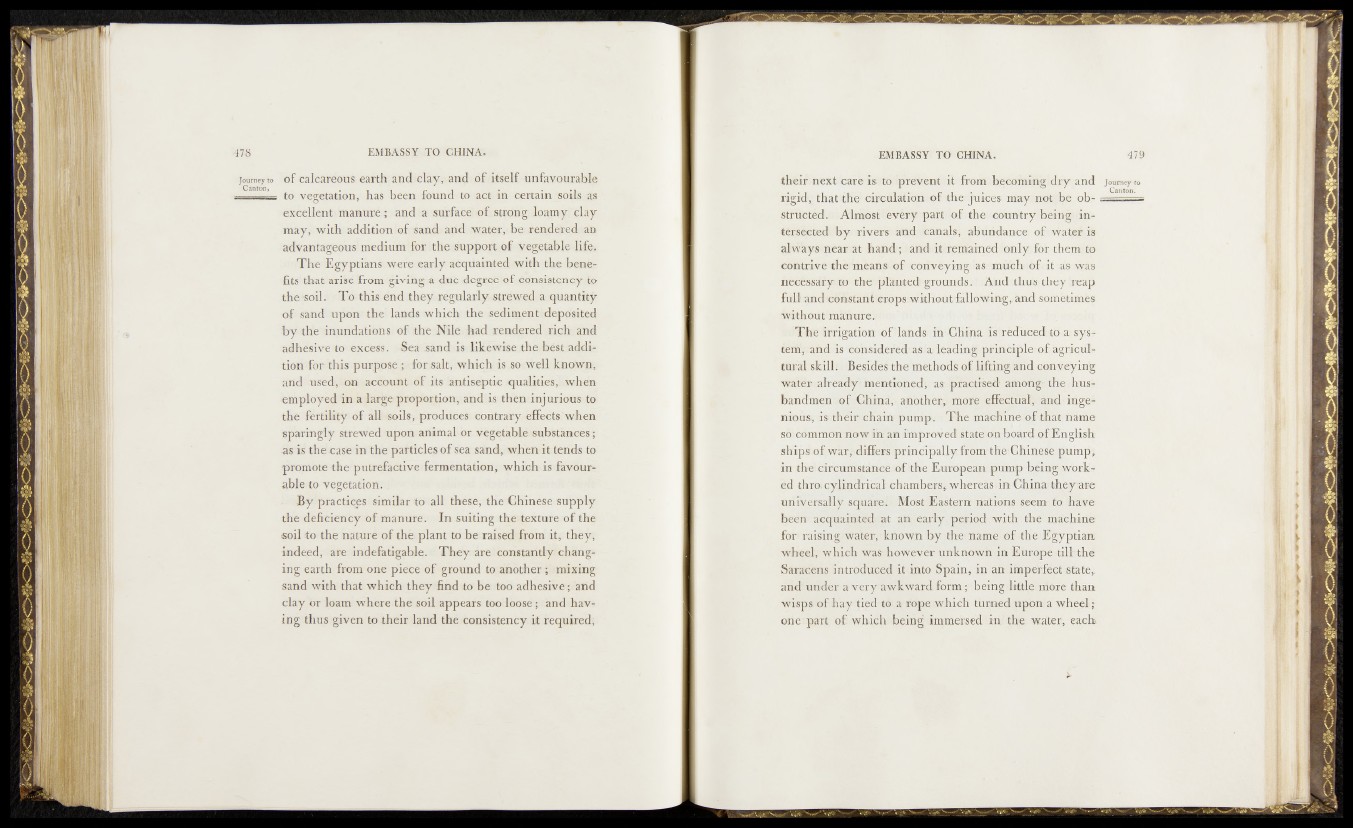
journey to -of calcareous earth and-clay^and of itself unfavourable
* to vegetation, has heen found to act in certain soils as
excellent^manure; and a surface of strong l f ^ 0 # 1 ^
may, with addition of sands and water ,?be renderedfian
advantageous^ medium for .theisupport of vegetable life
The Egyptians- were early acquainted with the benefits
that arise from giving a due degreetof consisteriqy?tp
the soil. To this é tó th e y regsularly^strèwedia quantity
of sand upon the lands which the .sediment ^deposited
b y th e inundations of the Nile had jrendfred .rich and
adhesive to mcess. Sea sand'is likewise thprbjistjaddir
tion for this purpose g.«for salt, which is s© Well known,
arid used, on account of its antiseptic qu^tieS,1awhen
■employed in a large proportion, and’is then injurious-to
the fertility of all soils, produces!contrary efifects when
sparingly strewed upon animaLór vegetahléisubstances ;
■as is thëfcasé in the particles of sea sand^ whendt tends to
promote the'putrefactive fermentation, whiièhis fevhurT-
able to vegetation, i
By practices similar to all these, the Chinese supply
the deficiency of manure. In suiting the*textere/of the
«oil to the nature of the plant to he raised from it, theyj
indeed, are indefatigable. - They are constantly change
ing earth from one»piece of ground to another?jifa mixing
sand with that which they find to be too adhesive; and
clay hr loam where the soil appears too loose; and-having
thus given to their land the consistency k required,
their next car© isirtniprèéfeêffli^it from11 beookdëgi dry- and joumey to
rigid», that the-* circulatioifoo'f >thehj?ùtees>om'ay ‘natfb6 Wr .....«=
stf'u’etted.« ..Alm'ostttfevery partdafwbe-» countrylbéi-feg^dn-
tersëeted»?fey.'irivhtsf'' and*^nafs|^buiid'anea oft<v^atej is
alwhys^n/eanat ha«nd?;.i?arrdri;taremainedihialy^for them:to
contrive therihèanSi^sceny&ykæ^tas- ■ muèbibfrit ,ab,!VMa>s
necéssary»€o the plantedr-grounds. I And - thws> they heap
full and-constant.erops:with!®ut-,felloiteim»g,' and sometimes
without ' mahtrrel« » >r
The irrigationt©lf landsWn d h ik a îsf recbtcedricfm sys4
teéé; andeis rcohsadsBedsa^darfeadin&jf^nciple^p^gricultural
skill.-' tBpsddes the methods of Mftingiahd G^nyjeyirig
water.-aheadjy> merdpnlqp;a^ practised4 among- thqpbus-
bandmenoof .Ohina*,» another,» 'ttiore:- e'fl^etua]%#feid ingèl
nèoûsi>risrtheirjaâhaàn pump. Trie machiné 'oftfc^rhamp
sfccdmmon now in- an improved Ifdtritdii board .of E n ^ ish
shîpi-of'wk-r^difFersIpÈi^^pally-from tUelGhirr^s^pump,
in tbei circumstance of the European, pump lining.worked
thro cyfindricakehambers y w h e i|l||« n vG.K.iqa^ theyjaEe
universally squared Most Eggsterir natrons- seémçid IhWe
been) acquainted at an?,early.pj^ipdb'with t-heP machine
for raising^water,'known hyvkhe-name of:;theIfl||yptian
wheel, which was- hq#wc\ cr unknolwmin Edn^pe^tilhthé
Saracens: introdüfcéd it into Spain, in an impèlrfeet stated
and under >a -very awkward.fotm;);r:beingdrt<d0'Hlore than
wisps, of hay hied; to a rape, whicli turned, upon a wheels
one'part: of which, being ùmmefcséd :m ' the water, each